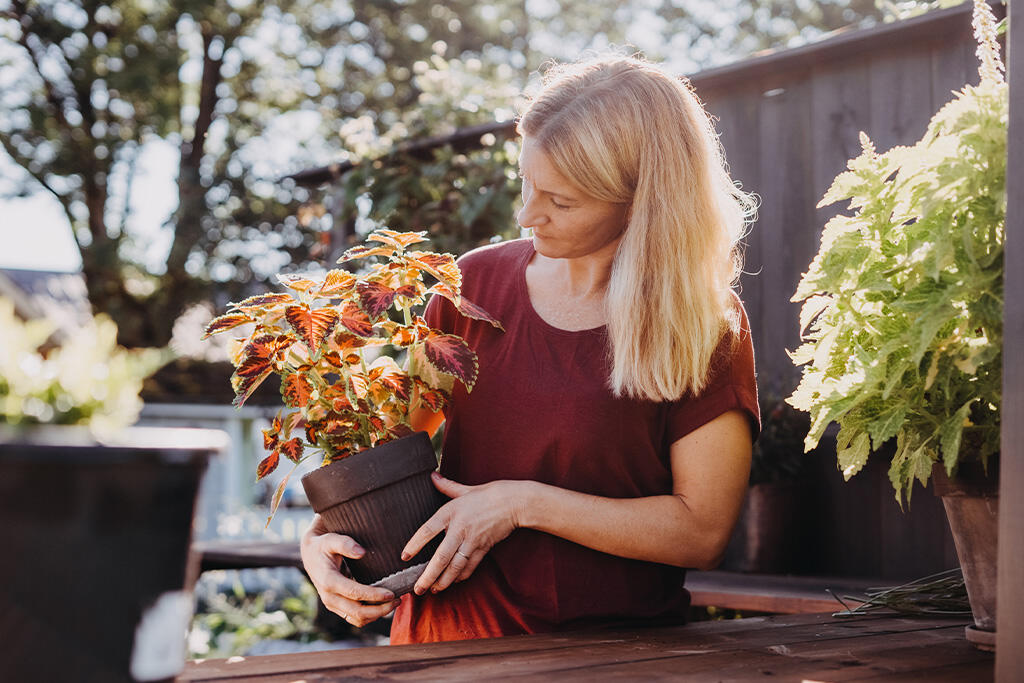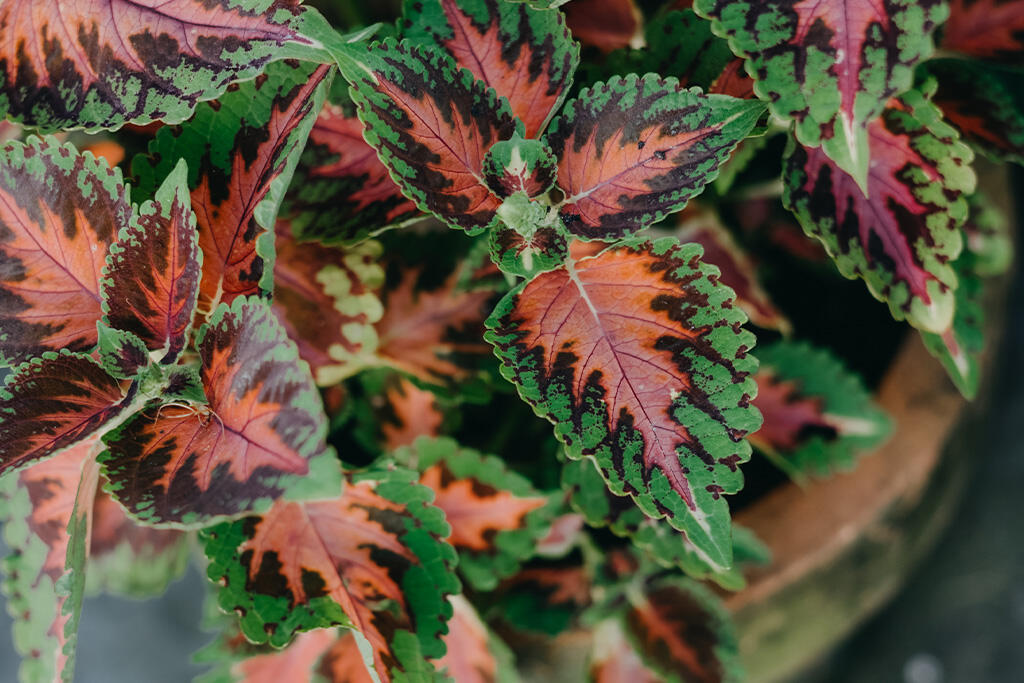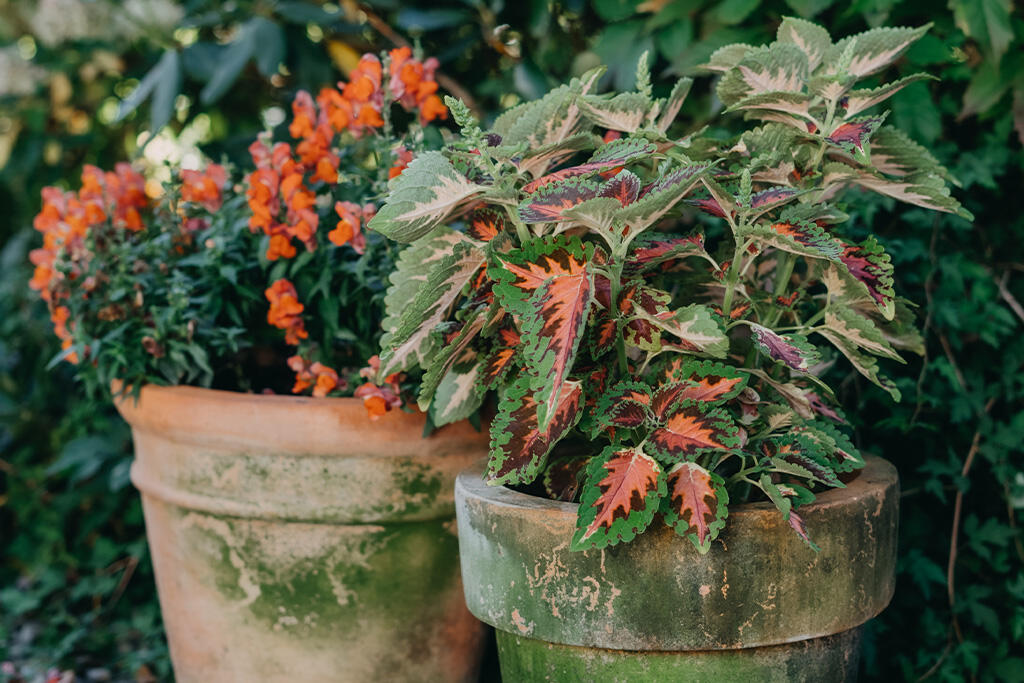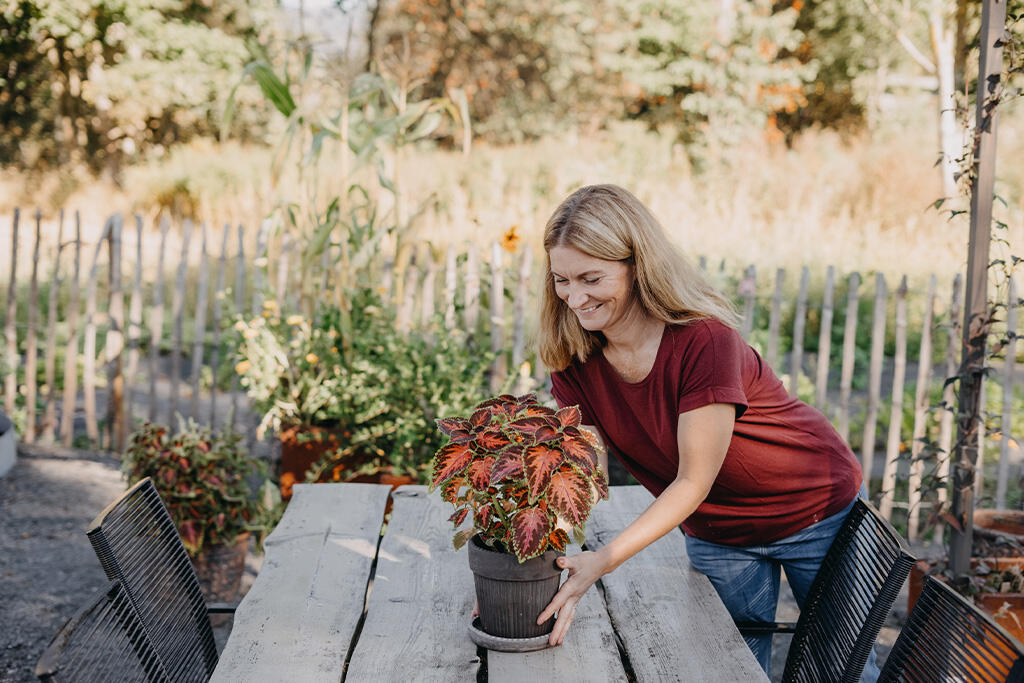Free returns
Quick delivery
Established 1933
How to succeed with Coleus
22 June 2022Flame nettles, aka Coleus, are growing increasingly popular. No wonder they enjoy pride of place in more and more homes. Easily cultivated and with colourful leaves, they’re rewarding to grow both indoors and out. If you keep them in the window all the time, there will be some challenges during the darkest part of the year, but here are a few tips to help your plants succeed all year round.
Grow your own flame nettles
If you know anyone who has flame nettles, taking a cutting is super easy, and pretty soon you’ll have a new plant that’s well on its way to getting bigger. All you need for a cutting is the top of a shoot. Make sure the stem is 5 cm long as this will make it easier to insert it in a glass of water once you’ve removed the bottom leaves. Use a clean glass and change the water from time to time to avoid bacterial growth. The stem usually develops roots within 2–3 weeks, when your flame nettles will be ready for planting. If you choose to plant cuttings directly in soil without first putting them in water, it’s important to keep the humidity high after planting. Here, a garden cloche is useful for creating a stable environment. For both methods, it’s a good idea to use a low-nutrient soil such as Nelson Garden Premium potting soil. This soil promotes a good start and is gentle on new plant roots.
Growing Coleus from the plant’s microscopic seeds is really rewarding. If you sow in February or March, your plants will be ready for summer. Use a slightly moist, premium potting soil that is compressed before you sprinkle on the seeds. Then cover the seeds with a layer of Vermiculite, which provides a stable environment by retaining moisture around the seeds while letting light through. After sowing, place the entire pot in a bowl of water to allow the soil to draw up the necessary amount of water before placing the Coleus cutting under a garden cloche. A good way to speed up germination is to place the cloche on a heating mat to provide bottom heat. If you place a grow light above them, it will give the seedlings the necessary light for compact growth right from the start. When the seedlings are big enough to be handled, they should be transplanted into separate pots with a more nutritious soil for further growth.
Where to place Coleus
A Coleus has a few requirements for care in the form of light, water, nutrition, temperature and topping. These are important aspects for a strong, compact plant with beautifully coloured leaves. Flame nettles are grown mainly for their leaves, and many perceive the flowers to be untidy and disorderly. Topping the plant leads to more side shoots and also removes the flowering parts. All topping really entails is cutting off the top of a shoot. This sends a signal to the plant telling it to grow new shoots from the leaf stems below. Often, topping leads to 2-4 new shoots on the existing stem. If you do this regularly starting when the plants are small, your flame nettles will get a denser, bushier shape.
Flame nettles like nutritious, well-drained soil kept evenly moist. Providing liquid fertiliser when watering gives the plant a stable supply of nourishment, leading to good growth. Because flame nettles grow fast, they need a lot of new energy and light. The colourful leaves are at their impressive best if they get a lot of light, but avoid strong sun. Partial shade or filtered light is super, and will give your leaves beautiful colours.
Summer holidays outdoors
Like many other indoor plants, Coleus does very well outdoors in the summer. They look especially good in pots on the balcony or in the garden. They really come into their own in the partial shade under a tree, or as a feature between a lot of other greenery. Because they come from warmer parts of Asia and Australia, they don’t like low temperatures. This is especially true at the beginning of the season. So give Coleus time to acclimatise. Hold off putting them out until the nights stay above 10 Celsius. By autumn they’ll be more robust and will do just fine until the mercury creeps down to zero. If you’re going to bring the plants indoors for winter, it’s best to do so before it gets too cold. This will spare them from the shock of coming back into the warm again.
Coleus gets its most beautiful colours outdoors in the summer thanks to the amount of light and temperature fluctuations. Their colours are beautifully saturated, and their growth more compact. Remember to put them in partial shade and avoid strong sunlight. Also, continuing to prune the tops will make the plants devote all their energy to developing new leaves instead of flowering.
Bringing the plants indoors for autumn
After a good summer outdoors, bringing the plants back in may be a challenge due to their size. If they enjoyed good growing conditions, some plants may be big and have no chance of fitting in a window. One solution is to take more cuttings! If you bring the plants indoors or choose to make cuttings, do so before it gets too cold out. Cuttings taken in the autumn will soon become new parents for next year’s plants.
As the days get shorter in the autumn, flame nettles begin to change the way they grow and lose colour when they come indoors. Fortunately, there are excellent means and simple tricks today that make overwintering flame nettles child’s play, namely grow lights
As with all plants, the balance between light and temperature is crucial for good plant growth and well-being. Make sure your flame nettles don’t get too hot, and avoid placing them above an electric radiator. A temperature of 15–20 Celsius is just fine. Ideally, provide extra plant lighting, preferably 12–14 hours of light every day. With this balance, your plants will show clear signs of good health with more colourful leaves and a denser shape. When we use grow lights, new cuttings root faster and the additional light keeps growth going throughout the winter. Remember to prune throughout the winter for more compact growth.
An extra tip for growing Coleus outdoors
When planting Coleus outdoors in the summer, it’s best to make sure the planter has sufficient volume. There’s nothing to worry about when planting in flowerbeds or pallet collars, but this will save you a lot of watering and help the plants enjoy greater well-being. A larger planter with more soil reduces the risk of drying out, and because flame nettles like uniformly moist soil without being waterlogged, a big planter will provide stability without your having to water constantly. In addition to sufficient volume, it’s always smart to have holes in the bottom of your planter.



